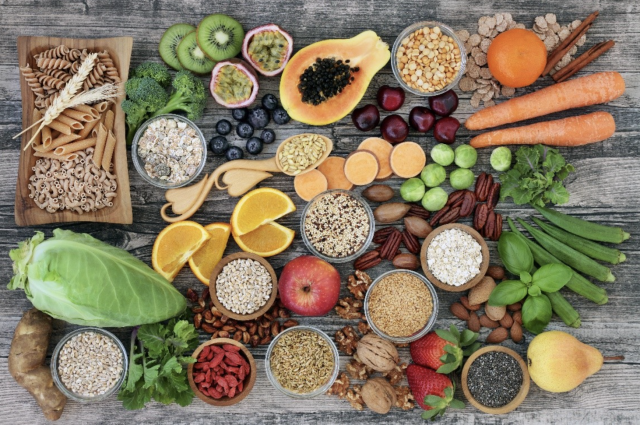Getting enough protein on a plant-based diet might seem tricky at first, but it’s actually easier than you think. With so many plant-based protein options out there, you can meet your protein needs. Yes, this is now possible with some delicious and nutritious meals.
Let us tell you more about such meals that can keep your protein levels in check without overthinking it.
Why Do You Need Protein?
Contents
Protein is essential for your body. It helps repair muscles, keeps your immune system strong, and gives you the energy to power through your day. Since your body doesn’t store protein like it does carbs or fat, you need to get enough every single day.
If you’re on a plant-based diet, you’re probably wondering where to get your protein. Don’t worry—plants have you covered!
You just need to know the right sources and how to include them in your meals.
The Best Plant-Based Protein Sources
There’s no shortage of options when it comes to plant-based proteins. Many foods you already know and love are packed with protein, plus they bring other nutrients to the table.
Here are some of the best options.
- Beans and legumes: Lentils, chickpeas, and black beans are full of protein and fiber.
- Tofu, tempeh, and edamame: These soy-based foods are super versatile and high in protein.
- Whole grains: Foods like quinoa and oats aren’t just carbs—they’re great sources of protein too.
- Nuts and seeds: Almonds, chia seeds, and sunflower seeds are tasty and protein-rich snacks.
- Veggies: Believe it or not, greens like spinach, broccoli, and Brussels sprouts also contain protein.
How Much Protein Do You Actually Need?
Most adults need about 50-70 grams of protein a day. It all depends on factors like your weight and activity level. If you’re super active, you might need a bit more. But don’t stress—hitting these numbers on a plant-based diet is totally doable.
You can easily track your protein intake from a plant-based diet by using a food-tracking app or just keeping an eye on your portions.
For example, a cup of lentils has 18 grams of protein, while a serving of tofu has around 20 grams.
Easy Ways to Add More Protein
Here are some simple tips to boost your protein intake without overcomplicating things.
- Mix and match foods. Pair foods like rice and beans or hummus and whole-grain bread to create complete proteins. This means you’ll get all the essential amino acids your body needs.
- Plan your meals. Add protein to every meal. For breakfast, try oatmeal topped with chia seeds and almond butter.
- Lunch could be a quinoa salad, and dinner might be a stir-fry with tofu and veggies.
- Use fortified products. Look for plant-based milk, cereals, or protein powders that are fortified with extra protein. They’re an easy way to hit your daily goals.
What About Other Nutrients?
While you’re focusing on protein, it’s good to think about other nutrients too. For instance, you might wonder about what does silica do for the body.
Silica plays a big role in keeping your skin, hair, and joints healthy. That is why always suggest all to pair silica-rich foods like oats with protein-rich ones as a win for your overall wellness.
Myths About Plant-Based Protein
You might hear people say that you can’t get enough protein on a plant-based diet, but that’s just not true. Athletes, bodybuilders, and everyday people thrive on plant-based protein. Soy foods like tofu are especially great—they’re high in protein and support heart health.
Another myth is that plant-based protein isn’t “complete.” While some plants don’t have all the amino acids, combining different foods takes care of this easily. For example, beans and rice together make a complete protein.
Benefits of Plant-Based Protein
Choosing a plant-based protein isn’t just good for your body but also it’s great for the planet too. Plant proteins are naturally low in saturated fat and cholesterol. This is what makes them heart-friendly.
Plus, they’re packed with a high amount of fiber in it. As a result, they help you with easy digestion and keep you feeling full longer. That is why one can maintain a healthy weight with their benefits.
Make It Simple and Fun
Eating enough protein on a plant-based diet doesn’t have to be hard. It’s all about mixing things up and trying new foods. So, add some lentils to your soup, sprinkle chia seeds on your smoothie, or snack on roasted chickpeas.
The best part? You’re not just fueling your body but are also exploring a world of flavors and textures. So, start experimenting with plant-based protein today, and see how great you can feel!


